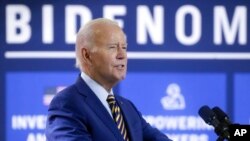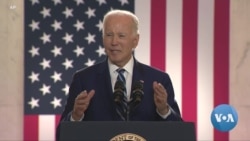The inflation rate in the United States fell sharply to 3% year-over-year in June, according to data released by the Department of Labor on Wednesday, signaling that efforts by the Federal Reserve to rein in soaring prices appear to have been effective.
The lower-than-expected report found that between May and June, prices increased by just 0.2%. The annual rate was a full percentage point below the 4% rate measured just a month ago, and far below the 9% rate that consumers were facing as recently as last summer.
Stripping volatile food and energy prices out of the equation, so-called “core” inflation was 4.8% year-over-year, also lower than economists had expected. Fed policymakers would like to see that core rate decline to 2%, meaning that there is still considerable room for improvement. But most analysts saw Wednesday's report as very good news.
“We've been on quite the inflation journey over the past couple of years, but as we look at the Consumer Price Index, not only are these measurements better, but they're better than expected. And that's a good combination,” Mark Hamrick, a senior economic analyst at Bankrate.com, told VOA.
Biden celebrates
Wednesday morning, President Joe Biden took credit for the positive inflation news in a statement that attributed falling prices to his economic policies, which he referred to as “Bidenomics.”
“Good jobs and lower costs: That’s Bidenomics in action,” he said. “Today’s report brings new and encouraging evidence that inflation is falling while our economy remains strong. Annual inflation has fallen each of the last twelve months and is now down to 3%. We’ve made this progress while unemployment remains near record lows and a higher share of working age Americans are in jobs now than in 20 years.”
Biden went on to note that workers’ wages have been on the rise, particularly for those in lower-income brackets, and pledged to continue to “fight for lower costs for families every day.”
Fed still expected to raise rates
The Federal Reserve, after lowering interest rates to near-zero during the worst of the coronavirus pandemic, in March 2022 initiated a series of sharp interest rate hikes that were meant to cool down the economy and bring the rate of price increases lower.
By May 2023, the central bank had increased the target federal funds rate by 5 full percentage points, to a range of between 5% and 5.25%. The federal funds rate, which banks charge each other for ultra-short term loans, is a critical benchmark that affects the interest rate consumers pay for myriad forms of credit, including mortgages, car loans and credit card debt.
The central bank took a much-publicized break from rate hikes in June, declining to bump rates up again at the last meeting of the Federal Open Market Committee (FOMC). However, policymakers are expected to increase rates again when they meet later this month.
Wednesday’s lower-than-expected inflation numbers sparked speculation about whether the expected July rate hike will mark the end of the central bank’s tightening phase.
In an appearance Wednesday morning on “Bloomberg Surveillance,” William Dudley, the former president of the Federal Reserve Bank of New York, said, “The Fed should be cheered by this, but I don't think it's going to change what they're going to do at the July meeting.”
Dudley, a former member of the FOMC, added, “What I think this does do is open up the question of, ‘Will July be the last one?' And that's certainly possible.”
Consumers remain uncertain
While the Biden administration is celebrating the lower inflation figures, it is less clear whether the successful effort to lower prices has been resonating with the broader public, which has been watching prices rise at rates many adults have never experienced in their lifetimes.
When rates hit 5% in spring 2021, many Americans could recall similar inflation in the aftermath of the financial crisis in 2008. However, as rates crept upward, historical comparisons receded further into the past. When rates hit a peak of 9.1% in June 2022, they were the highest recorded in the U.S. since 1981.
The experience has left its mark on U.S. consumers. Multiple recent surveys have found continued uncertainty about financial security and doubt about the future.
In a recent Bankrate survey, only 28% of American adults said they consider themselves financially secure, while 72% said they are not. The majority of Americans, 63%, blamed inflation for their feelings of financial insecurity.
However, Hamrick of Bankrate cautioned that consumer sentiment is typically a “lagging” indicator of the direction of the economy, meaning that sentiment may well remain depressed even after economic conditions have begun improving measurably.
“I would not look for consumer sentiment to be telling us what the future direction of inflation will be, except to the degree that maybe wage earners are going to be somewhat particular about trying to command a higher wage, and particularly if they're changing jobs,” he said.
Overall, he said, the broad picture of the economy remains generally positive.
“There's still a high demand for workers out there … and the employment rate is still below 4%,” Hamrick said. “Every time we get data that provides us some reassurance — and I would say broadly, that's been the case with the consumer price index here, and the June employment report — all that suggests that the economy is in motion toward a better place.”









